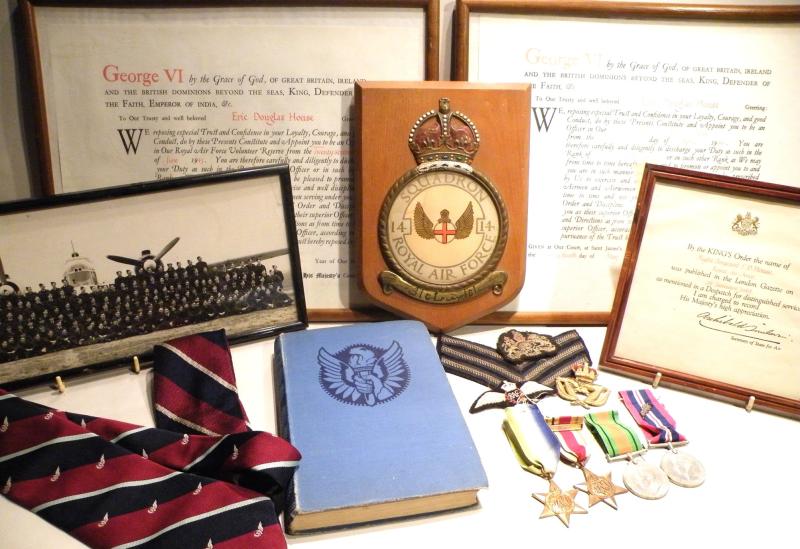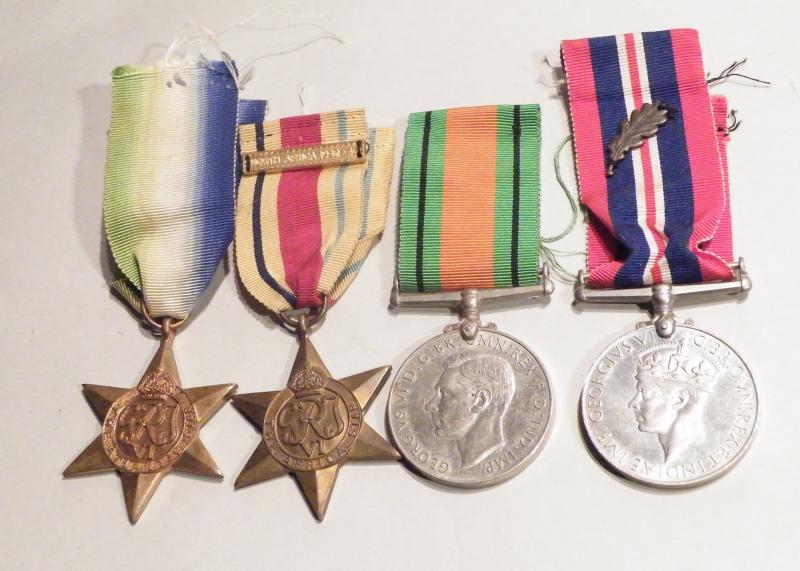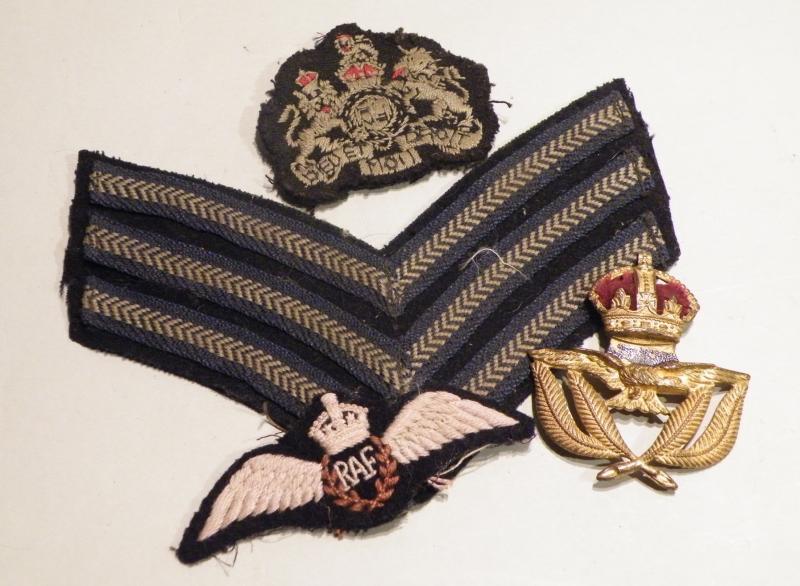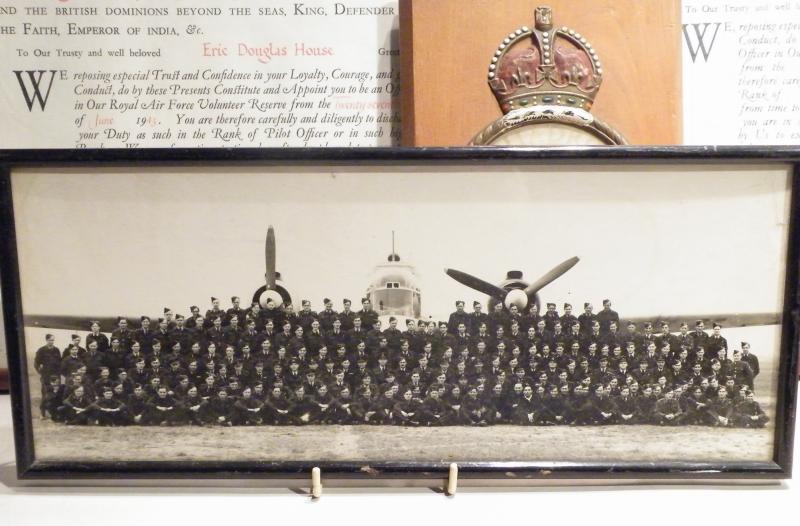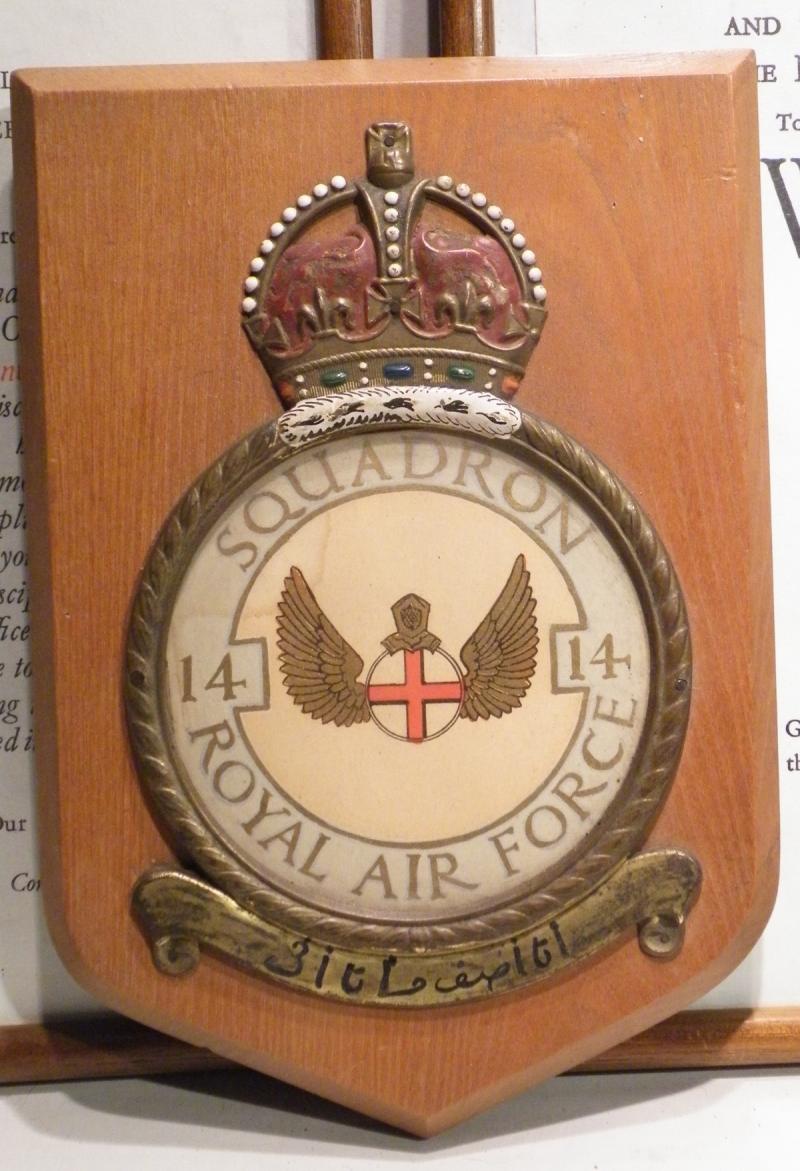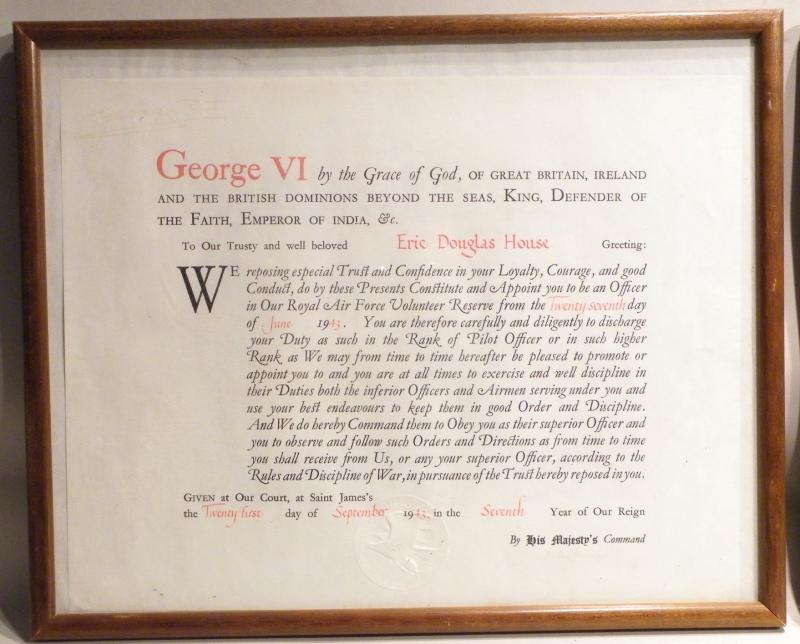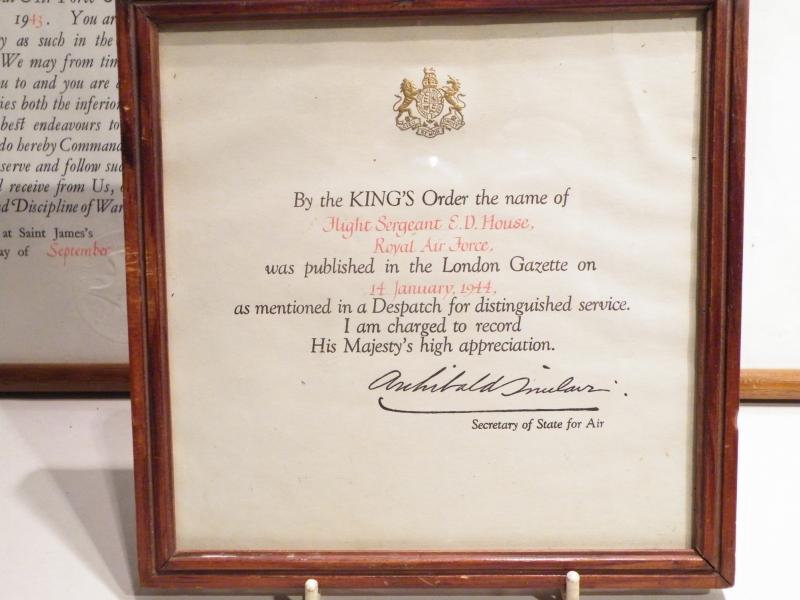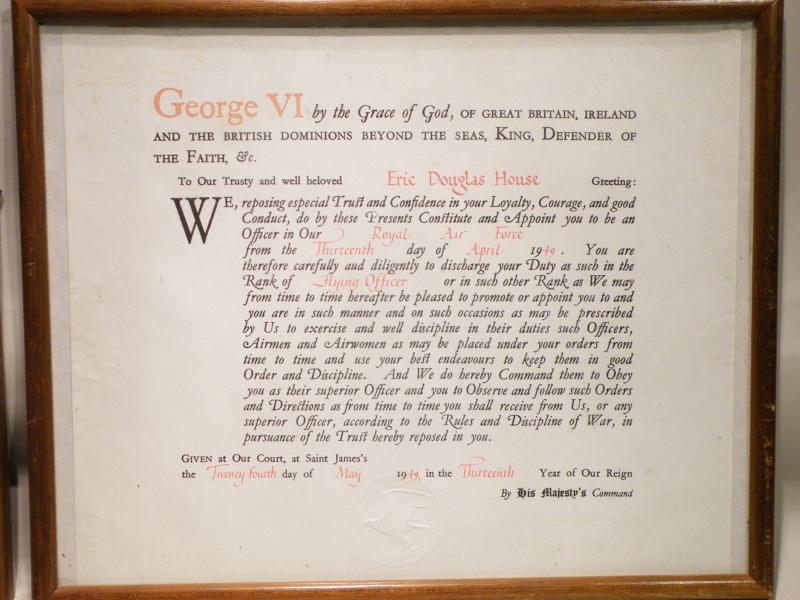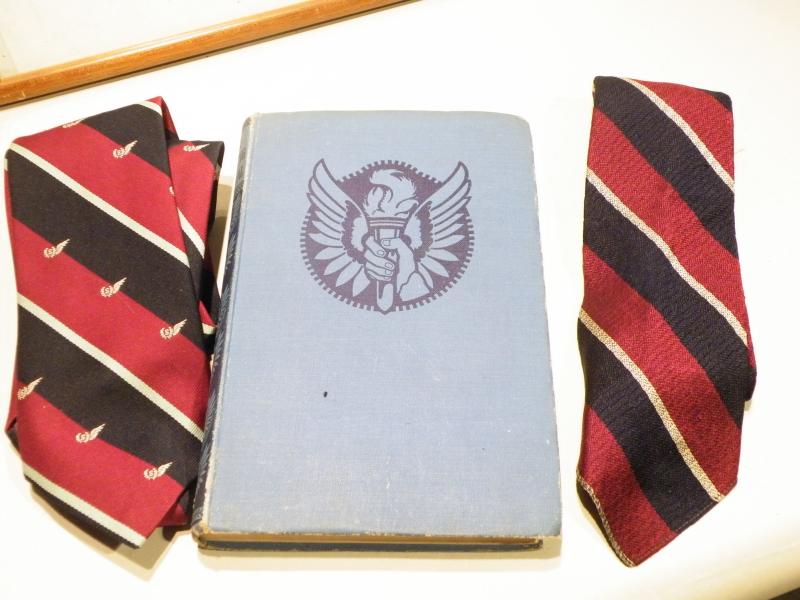WW2 Group to Flight Sergeant House MID RAFVR.
Here we have one mans WW2 medals and ephemera all relating and awarded to 916327 Flight Sergeant Eric Douglas House of the Royal Air Force Volunteer Reserve.
The medals comprise of the 1939/45 star, Africa Star with North Africa 42-43 bar, Atlantic Star, Defence medal and 1939/45 war medal with mentioned in Despatches oak leaf. A framed and glazed warrant certificate, a framed and glazed mentioned in despatches certificate, a framed and glazed discharge certificate. WW2 14th Squadron plaque, a framed and glazed squadron photograph, two RAF ties and other copied research.
Eric House was born in Brighton Sussex in the April 1916, to Frederick and Evangeline, Frederick a Jewler working for A F Hahn of 60 Ship Street Brighton. Before the war Eric was employed by an Architectural Ironmongers as a traveling salesman. He joined the RAFVR and enlisted at Uxbridge between September 1939 and June 1940. He was posted to the 14th Squadron in Eritrea in early 1941. In March 1941 the squadron carried out bombing raids in support of the assault on Keren. Then in April 1941, following the liberation of Addis Ababa, the squadron was sent to Egypt for operations over the Western Desert. The squadron was deployed in support of Operation Brevity on 15thth–16 May 1941, an unsuccessful British offensive, and carried out attacks on German and Italian motor transport, with five Blenheims being shot down by Messerschmitt Bf 109 fighters of III Gruppe, Jagdgeschwader 27 while carrying out bombing attacks along the Tobruk–Capuzzo road on 21st May.
The squadron flew attacks against Maleme Airfield on 25th and 27th May during the Battle of Crete, and in June, flew in support of Operation Battleaxe, another unsuccessful British offensive in the Western Desert. On 7th July 1941, the squadron withdrew from the Western Desert, being based in Palestine and Iraq until it returned to Egypt in November the same year.
On 17 August 1942, 14 Squadron was withdrawn from operations to convert to the Martin Marauder, the first RAF Squadron to operate the American bomber. The squadron flew its first operational mission with the Marauder, a maritime reconnaissance mission on 26th October 1942. The squadron used its Marauders for long-range maritime reconnaissance missions, minelaying and anti-shipping attack with torpedoes over the Aegean. The squadron's Marauders sank a tanker with torpedoes on 19th January 1943 and two more merchant ships on 21st February. In March 1943, it started performing anti-submarine missions and long-range maritime reconnaissance missions, finding targets to be attacked by other anti-shipping units, operating out of Blida and then Maison Blanche in Algeria. In May 1943 the squadron supplemented its Marauders by six ex-USAAF P-51A Mustangs on loan, which equipped an additional flight for offensive operations, but these were returned to the USAAF in July, the squadron continuing to operate the Marauder.
In June 1942, Eric now a seasoned member of the air crew was promoted to Flight Sergent, his duties included assisting the pilot, operating aircraft controls, advising on engine and system functions, and acting as a standby gunner. He was awarded his Mentioned in Despatches for distinguished service, this appeared in the London Gazette on the 14th January 1944.
The squadron operated detachments in Italy and Sardinia, moving completely to Alghero in Sardinia in June 1944. In July 1944, the squadron began to operate maritime patrol operations in conjunction with the Bristol Beaufighters of 39 Squadron, with a Marauder cruising offshore and directing Beaufighters to attack any shipping spotted. The squadron flew its last Marauder mission on 21st September that year, leaving its equipment behind when it transferred back to the UK.
The squadron operated within RAF Coastal Command from 24 October 1944. On its return to the UK, the squadron was based at RAF Chivenor and carried out anti-submarine mission over the Western Approaches and the Bay of Biscay using Vickers Wellington Mk.XIVs. The squadron was again disbanded on 1 June 1945 but was reborn the same day, when 143 Squadron at RAF Banff, equipped with the de Havilland Mosquito Mk.VI in the anti-shipping strike role, was renumbered. This incarnation of the squadron was short lived, being disbanded on 31 March 1946.
Eric was finally discharged on the 24th May 1949. It was more than likely that he spent his last three years as training staff.
A wonderful complete lot, the medals are loose and were once mounted in a frame with badges etc, which sadly was broken.
Code: 30558

